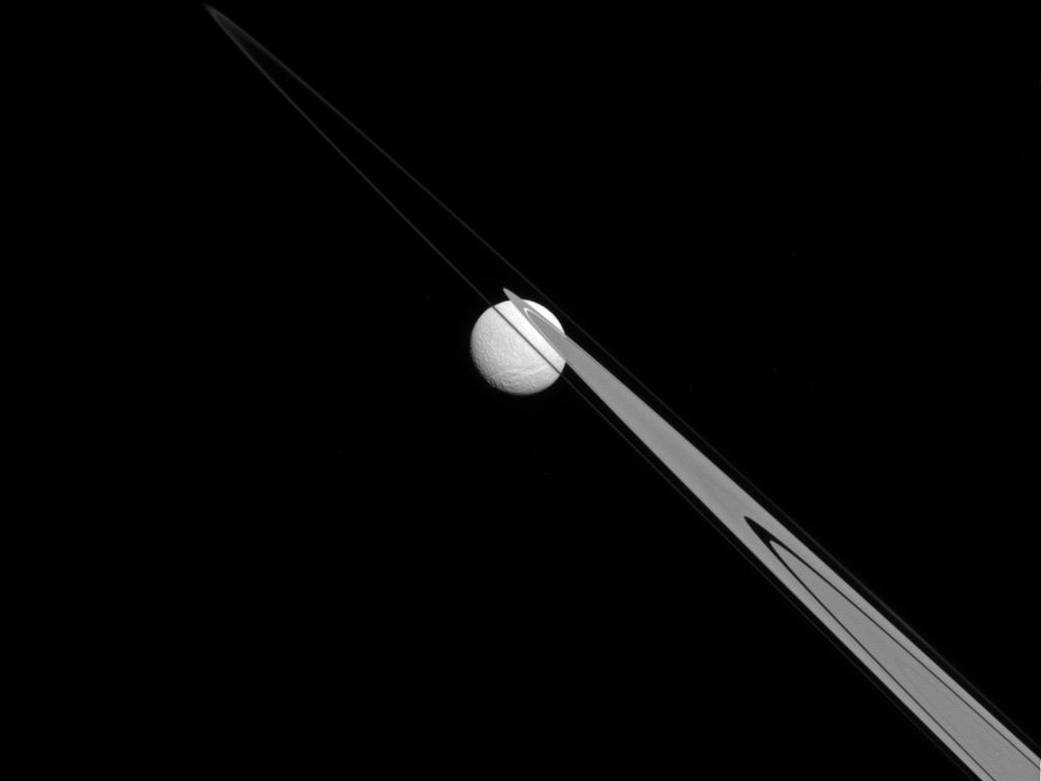Like a drop of dew hanging on a leaf, Tethys appears to be stuck to Saturn’s A and F rings from this perspective in this 2014 image from the Cassini mission. For more than a decade, Cassini shared the wonders of Saturn and its family of icy moons—taking us to astounding worlds where methane rivers run to a methane sea and where jets of ice and gas are blasting material into space from a liquid water ocean that might harbor the ingredients for life.
Saturn’s moon Tethys (660 miles, or 1,062 kilometers across), like the ring particles, is composed primarily of ice. The gap in the A ring through which Tethys is visible is the Keeler gap, which is kept clear by the small moon Daphnis (not visible here).
This view looks toward the Saturn-facing hemisphere of Tethys. North on Tethys is up and rotated 43 degrees to the right. The image was taken in visible light with the Cassini spacecraft narrow-angle camera on July 14, 2014.
Image Credit: NASA/JPL-Caltech/Space Science Institute
在这张卡西尼号2014年拍摄的照片中,从这个角度看,特提斯就像是挂在树叶上的一颗露珠,似乎粘在了土星的A环和F环上。十多年来,卡西尼号与我们分享了土星和它的冰卫星家族的奇妙之处——带我们进入了一个令人震惊的世界,那里的甲烷河流流入甲烷海洋,那里的冰和气体喷射将物质从液态水海洋喷向太空,液态水海洋可能蕴藏着生命的成分。
土星的卫星特提斯(660英里,或1062公里),像环状微粒一样,主要由冰组成。可见特提斯的A环中的缝隙是基勒环缝,小卫星达芙妮(此处不可见)使该缝隙保持清晰。
这张图是面向特提斯的土星半球。特提斯的北面向上,向右旋转43度。这张照片是2014年7月14日卡西尼号飞船窄角相机在可见光下拍摄的。
图片来源:NASA/JPL-Caltech/Space Science Institute








标题打错啦